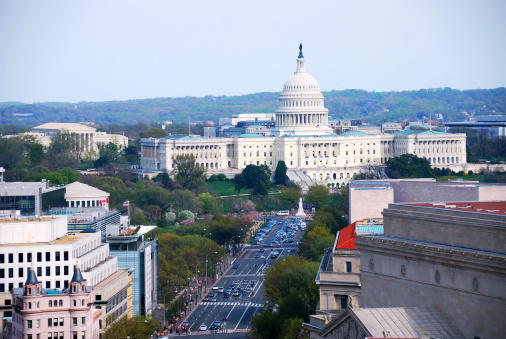Economy
Federal Budget Deficit Projected at Multiyear Low in 2015
Published:
Last Updated:

The estimated 2015 deficit represents about 2.6% of U.S. GDP, slightly lower than the average 2.7% budget deficits of the past 50 years. For 2016 and 2017 the CBO projects a deficit of 2.5% in each year and a deficit of 2.6% again in 2018.
After that deficits are projected to climb to 4% by 2025. Over the period from 2019 through 2015 the CBO cites four factors contributing to rising deficits:
Social security payments will rise faster than the economy. So will costs for Medicare, Medicaid, and Obamacare and net interest payments. The CBO bases these estimates on real GDP growth of about 3% in the next two years and 2.5% in 2017. Beyond that GDP increases at slightly more than 2%.
Inflation is expected to remain at or below 2% through 2025 while interest rates on 10-year Treasury notes are projected to rise to 4.6% from around 2.5% currently.
The CBO’s estimate of the national unemployment rate drops to 5.3% by the end of 2017, a faster rate than the agency had forecast a year ago. That’s good news and not-so-good news. The good news is that more people will have jobs; the not-so-good-news is that as GDP and employment rise the slack in the economy disappears and the country approaches the natural rate of unemployment. Fewer available workers means businesses have to pay more and productivity falls.
CBO’s deficit estimates are based on the assumption that current tax laws and spending will remain unchanged and are built on the agency’s economic forecast.
ALSO READ: IMF Cuts Global Growth Outlook
The thought of burdening your family with a financial disaster is most Americans’ nightmare. However, recent studies show that over 100 million Americans still don’t have proper life insurance in the event they pass away.
Life insurance can bring peace of mind – ensuring your loved ones are safeguarded against unforeseen expenses and debts. With premiums often lower than expected and a variety of plans tailored to different life stages and health conditions, securing a policy is more accessible than ever.
A quick, no-obligation quote can provide valuable insight into what’s available and what might best suit your family’s needs. Life insurance is a simple step you can take today to help secure peace of mind for your loved ones tomorrow.
Click here to learn how to get a quote in just a few minutes.
Thank you for reading! Have some feedback for us?
Contact the 24/7 Wall St. editorial team.